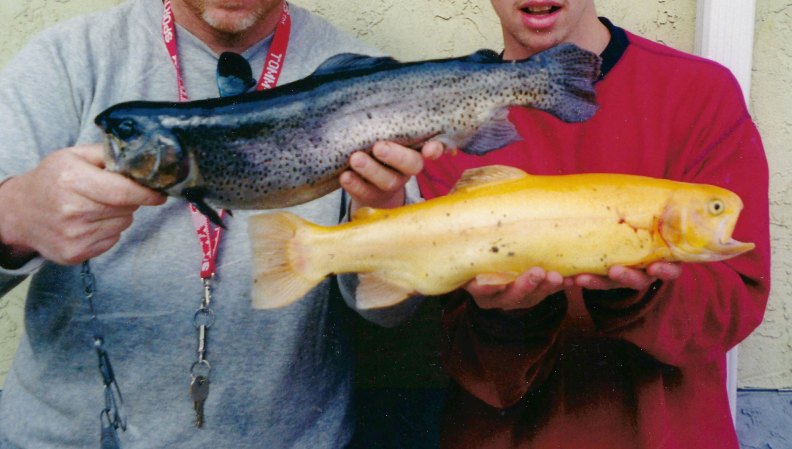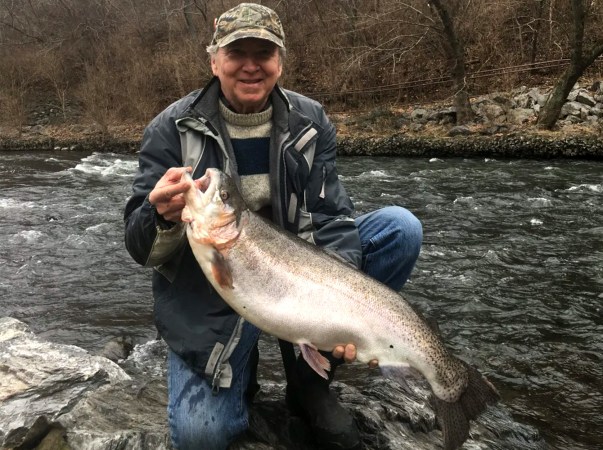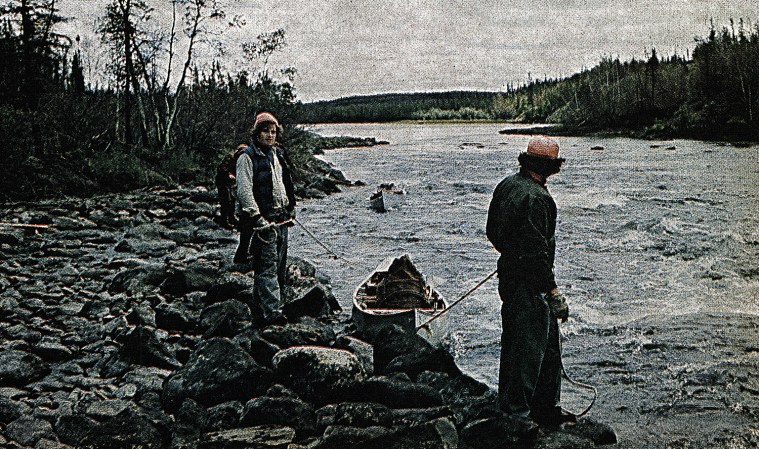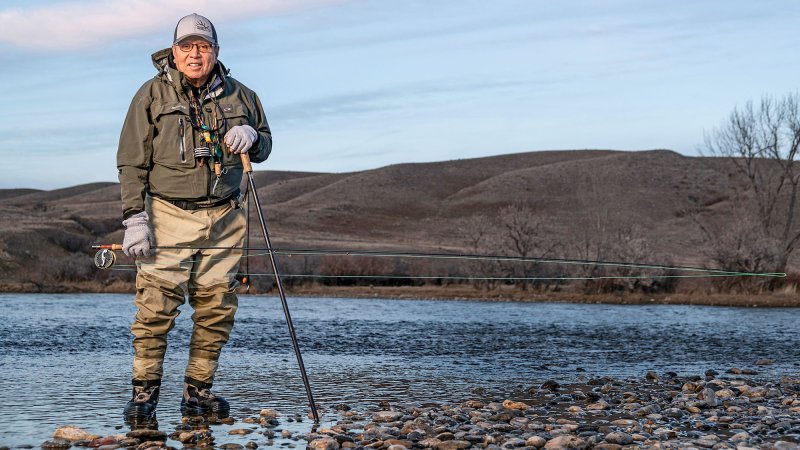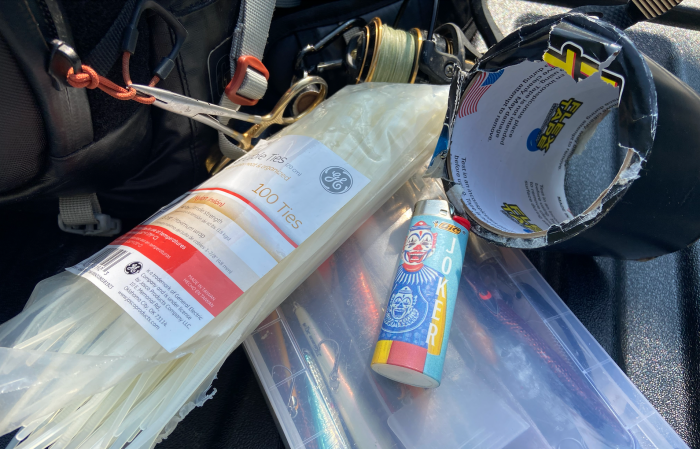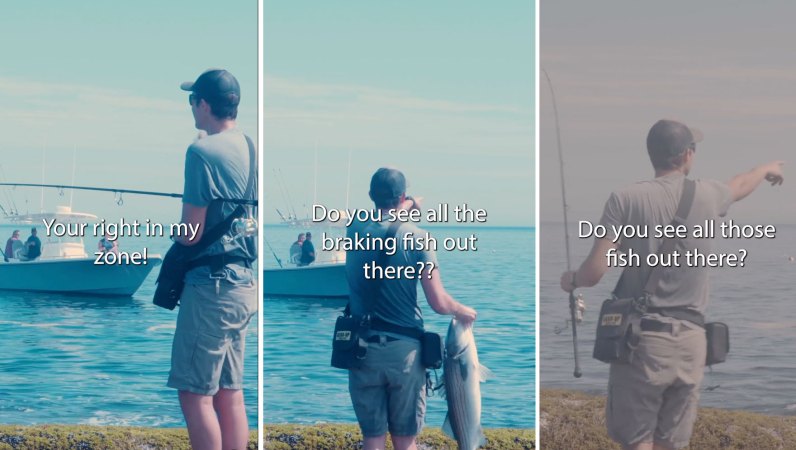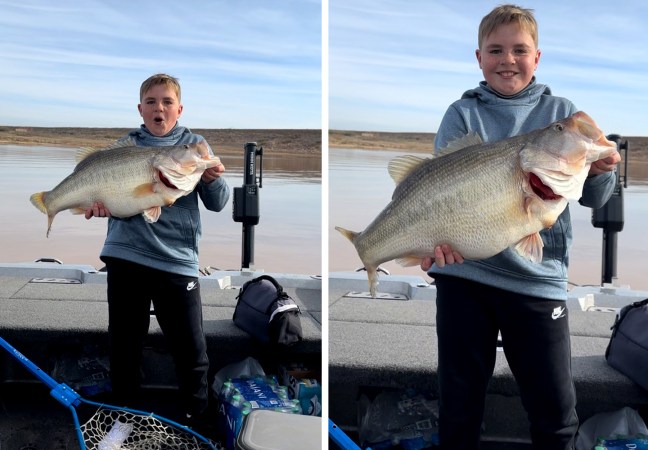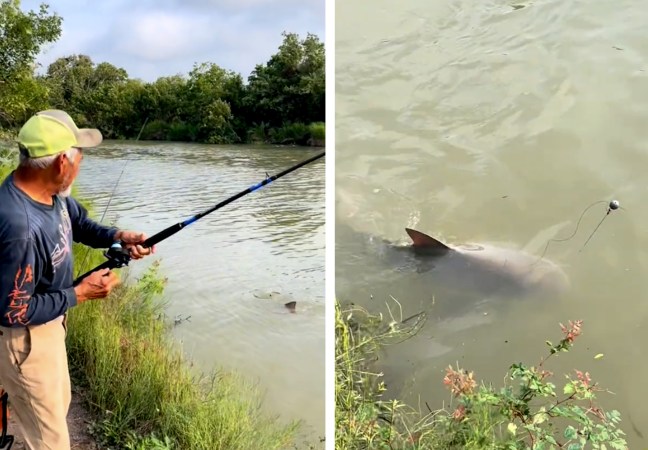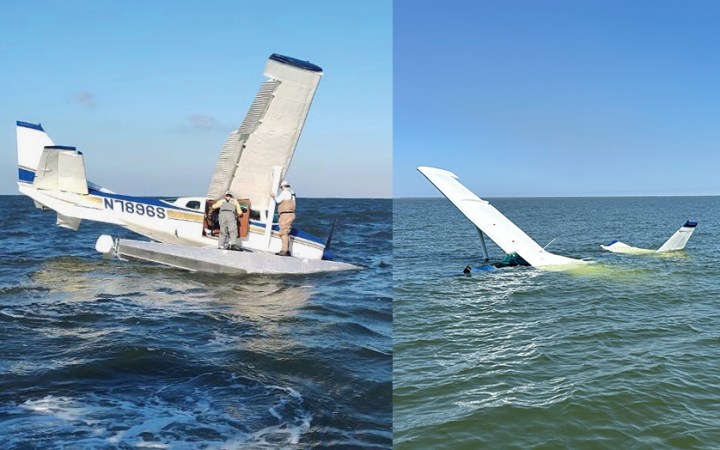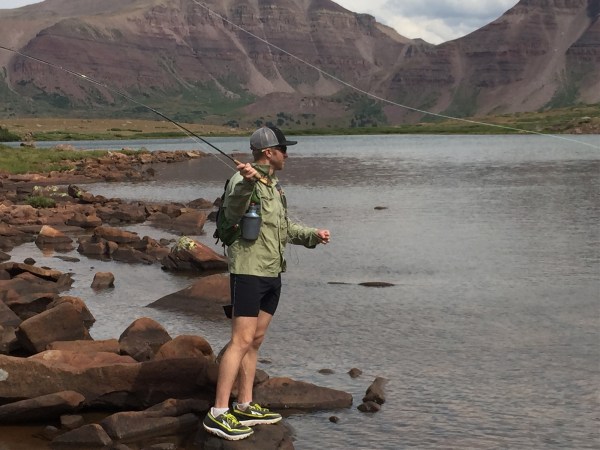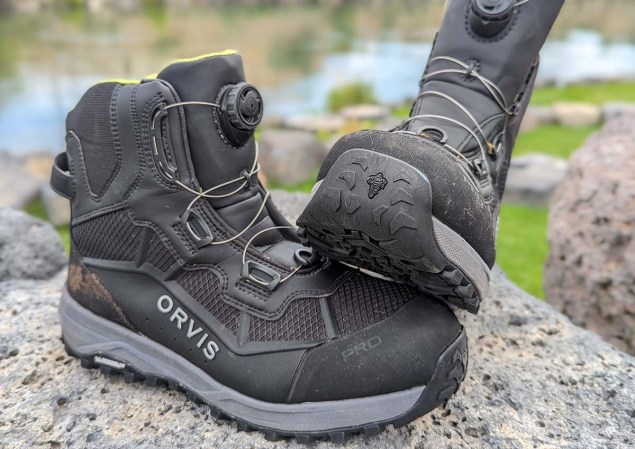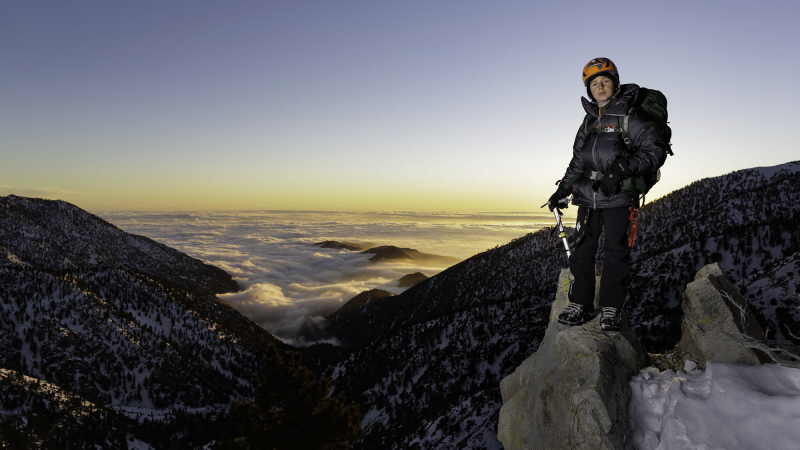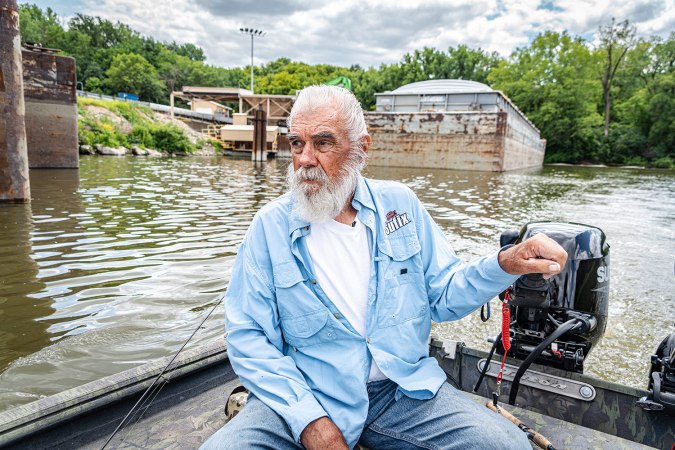We may earn revenue from the products available on this page and participate in affiliate programs. Learn More ›
I was nine years old when I got my first pair of rubber hip boots. It was a big deal, because it meant I could go shad fishing with my dad and his friends, and it gave me more access to trout streams. While I remember thinking how cool it was that I was finally tall enough for hip boots, what I really wanted was a pair of chest waders. It would take another 3 years for me to finally get them. There weren’t exactly a lot of options for youth waders in the early 90s. But things have certainly changed.
These days, thanks to Amazon, you can buy chest waders for a newborn (I mean, practically, anyway). My son, Jamie, got his first pair at age 4. Unlike me, he didn’t have to wait until he grew taller. The rite of passage aspect was gone, but he still cherished that first little pair. The byproduct of the availability of little-kid waders is that instead of teaching a more mature (and coordinated) 12-year-old how to wade in them, you as a parent take on the responsibility of giving a little tyke the tool to wade chest deep in water (often cold water) at an age when respect for that water may not be fully developed. I’ve been wading trout streams with Jamie for two years now, so if you’re itching to get your young son or daughter on the river with you, these tips I picked up along the way can help.
Be Practical, Shop Smart
There is a company called Oaki that makes what, to my eye, look like very nice waders for little kids. They offer them in breathable and neoprene models in sizes as small as 2T. While I’d bet they’re worth every penny, the reason I didn’t spring for them at $120 is because I know how hard my kid will be on them and I also know how fast he’s growing. If you’ve got kids in the 4- to 8-year-old range, you buy new sneakers and clothes often. Knowing that he may only get a season or two out of his little kid waders, I opted instead for a brand off Amazon called HISEA that sell for $50. He just got his second pair this spring since he got taller. There are several waders at this price point (and a bit less) on Amazon and I’d be willing to bet they’re all constructed very similarly.
For your $50, you get a perfectly fine pair of little boot-foot waders. To date I’ve never had any issue with the seams leaking, so, barring any abuse, they’ll keep your kiddo dry. But most kids don’t understand the concept of being careful. There was abuse, and while the seams around the crotch and boots held, the material itself simply isn’t as durable as the material in grown-up waders. For this reason, I’ve got a roll of Flex Tape handy whenever I fish with my son. I inspect his waders before splashing, and if he does end up with a small pin hole or tear, the tape gets us by until I can get home and seal it properly.
Don’t Forget the Studs

Photo by Joe Cermel
Some adult wading boots come with metal studs already installed in the soles, though there’s no shortage of aftermarket stud kits available to retrofit any wading boots. Personally, I won’t wade over rocks without studs, as I learned their value years ago during my jetty hopping days on the striper surf. Studs cut through slime, mud, algae, and rock snot to give you a much firmer grip on the bottom. I need them because I’m old, but I’d argue youngsters need them even more.
When kids first start wading, they tend to feel invincible, like they can run right in with their new “water pants,” as my son called them. But, considering kids don’t weigh much, they’ll slip and slide on slick rocks even easier than an adult. The forward soles of kids’ wading boots are thin compared to adult models, so you won’t want to drill studs into them because they can punch right through. The heels, however, are plenty thick, so even adding 3 or 4 studs there can make a mountain of difference in keeping your kid upright and dry.
Teach Them About Rocks
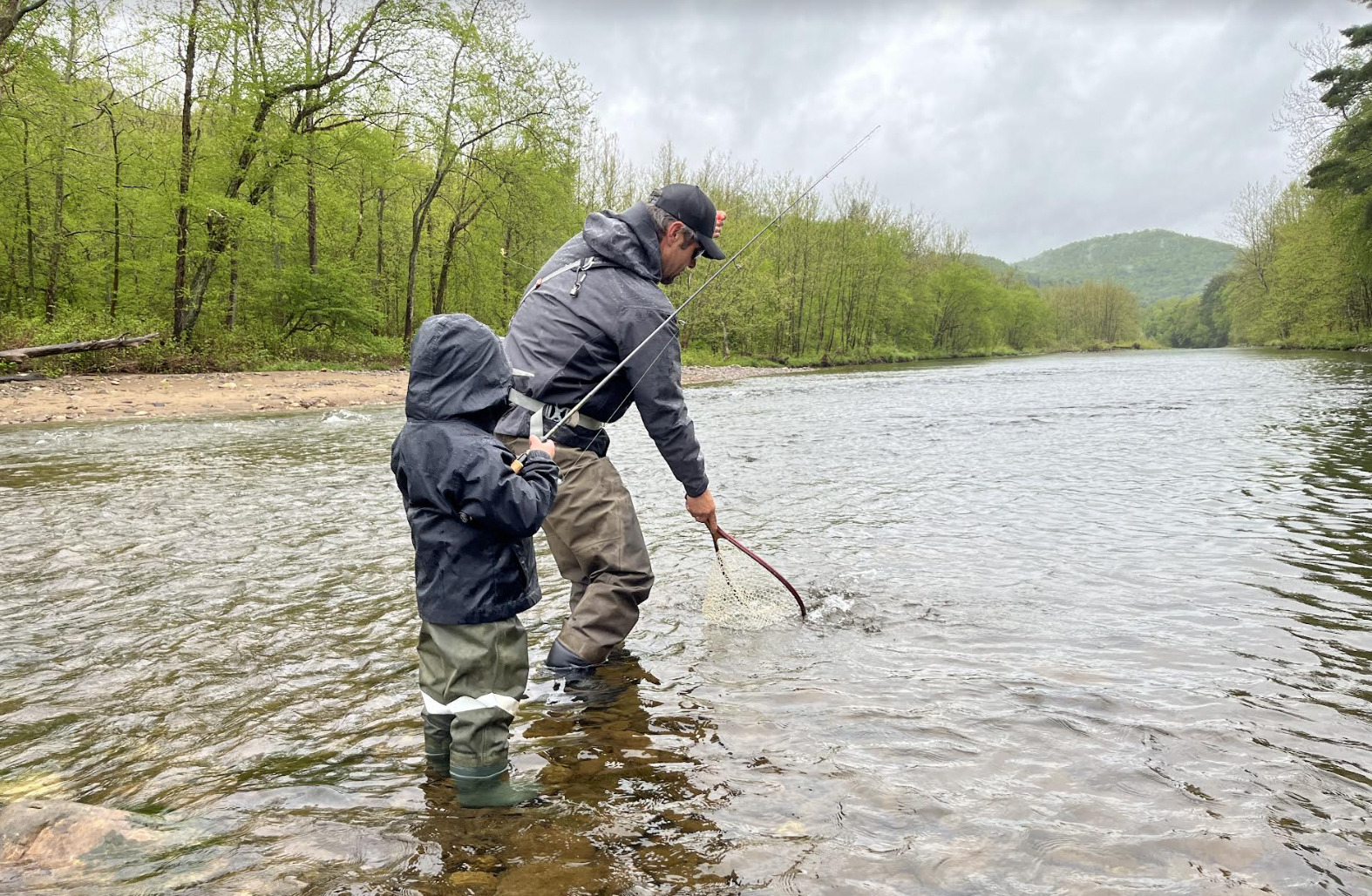
Photo by Joe Cermele
One of the best lessons I taught my son when he first started fishing in chest waders was how to associate the bottom with easier or harder wading. Kids (at least mine) seem to gravitate to large rocks. This is understandable. To them, a big flat rock offers more stability than a bunch of smaller rocks. But, as an experienced wader, I know big, flat rocks will put you on your butt and send you home for dry clothes much faster than the little ones.
The more surface area a rock or boulder has, the slicker it tends to be, because it allows algae, moss, and sediment film to form unbroken. Areas with smaller rocks may be just as slippery, but the angles created among them in the nooks and crannies give your feet better purchase. My son knows that pebbles or gravel are the safest; he can run across those. He knows he must take his time in fields of bigger rocks, and knows to avoid walking across big, flat ones unless he has no other choice. Learning this has helped diminish getting soaked, and he’ll even say stuff like “these are all easy rocks, daddy, but it looks like harder rocks around the bend.”
Keep Them Downstream
Obviously, you don’t want to attempt any dangerous crossing with your little person. But a shallow riffle that you and I could practically run across may be more daunting and deeper for those tiny little legs of your kid. Likewise, current we’d brush off can feel like a raging torrent for a kid, which is why no matter what, always keep them on your downstream side while wading.
If I take my son through a bit swifter water, our hands are locked and I’m upstream of him to break the current. By you bearing the brunt, you’re creating a calmer pocket on the downstream side of your legs. Try to keep in lock step so your kid stays in this pocket. If my son loses his footing (which he has) I also find it easier to lift him up and support him on my downstream side. If your child were to fall on your upstream side, you risk them bumping into you and knocking you down, too. Conversely, it’s reasonable to note if you fall on the upstream side, you could take out the kid. Fair point, but again, it’s a matter of scale, here. We’re talking about easy, safe water for you. We are not talking about wading a child across a rapid or in water deeper than their thighs.


